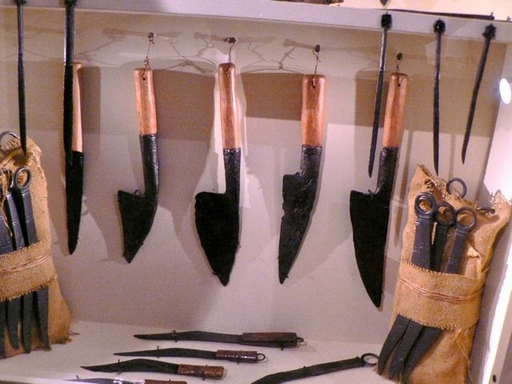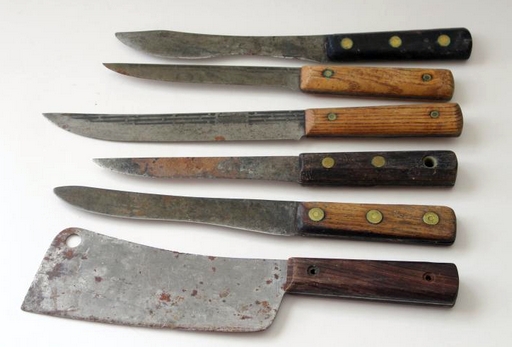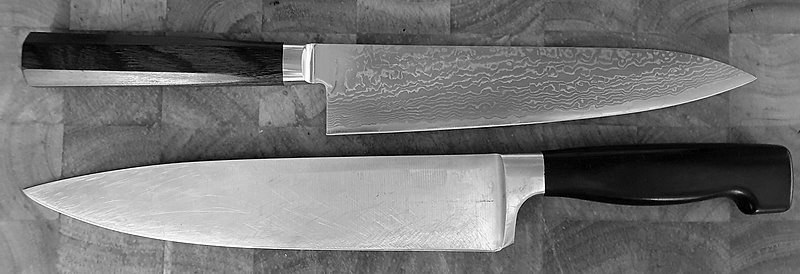a brief overview of two thousand years
of kitchen knife evolution!
Roman Era:
In the centuries that expanded The Roman Empire, iron and steel working knowledge spred from the east leading to the production of stronger and more durable knives. Roman knives commonly had a single-edged blade with a pointed tip with a handle made from materials such as bone or wood.

Middle Ages:
In medieval Europe, advancements in blacksmithing techniques allowed for the production of more refined knives. The mastering of steel allowed knives to become affordable and widely available to the homes of common people. A handle fixed to the tang by rivets became a familiar design.
18th and 19th Centuries:
With the industrial revolution and the advent of mass production, knife-making techniques advanced further. Blades were now made from high-carbon stainless steel providing better edge retention and corrosion resistance. During this time new shapes and sizes evolved to suit specific cooking tasks.

20th Century:
The 20th century saw the rise of standardized kitchen knife designs influenced by professional chefs and culinary schools. Companies like Wusthof, Henckels, Victorinox grounded their businesses as prominent European manufacturers which helped solidify these styles across the world. The chef knife, with its versatile design has become the standard all-rounder and the most widely used knife in history.

Today:
Western-style kitchen knives typically feature a blend of traditional craftsmanship and modern manufacturing techniques. With centuries of evolution, modern kitchen knives have never been better designed and better built!
